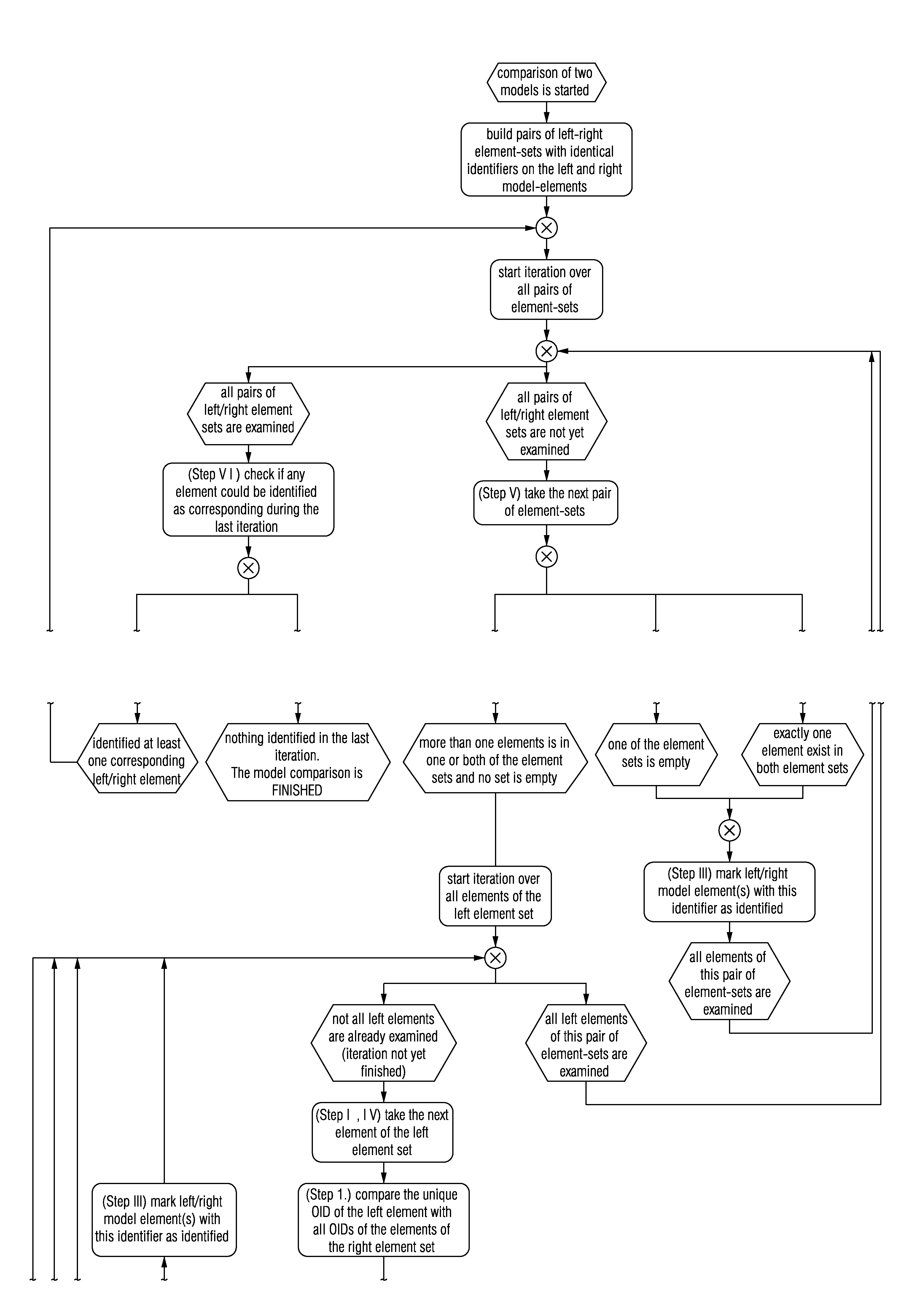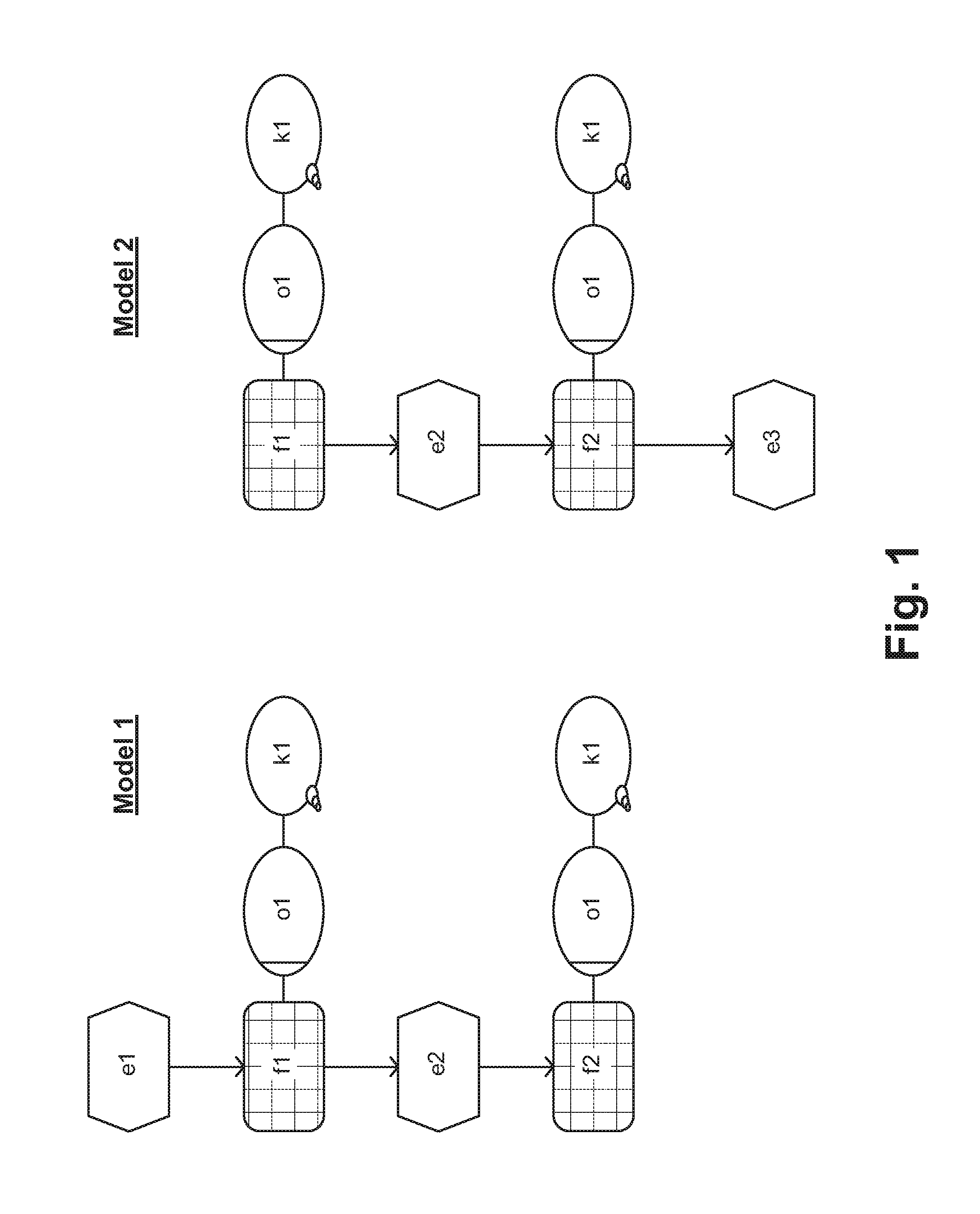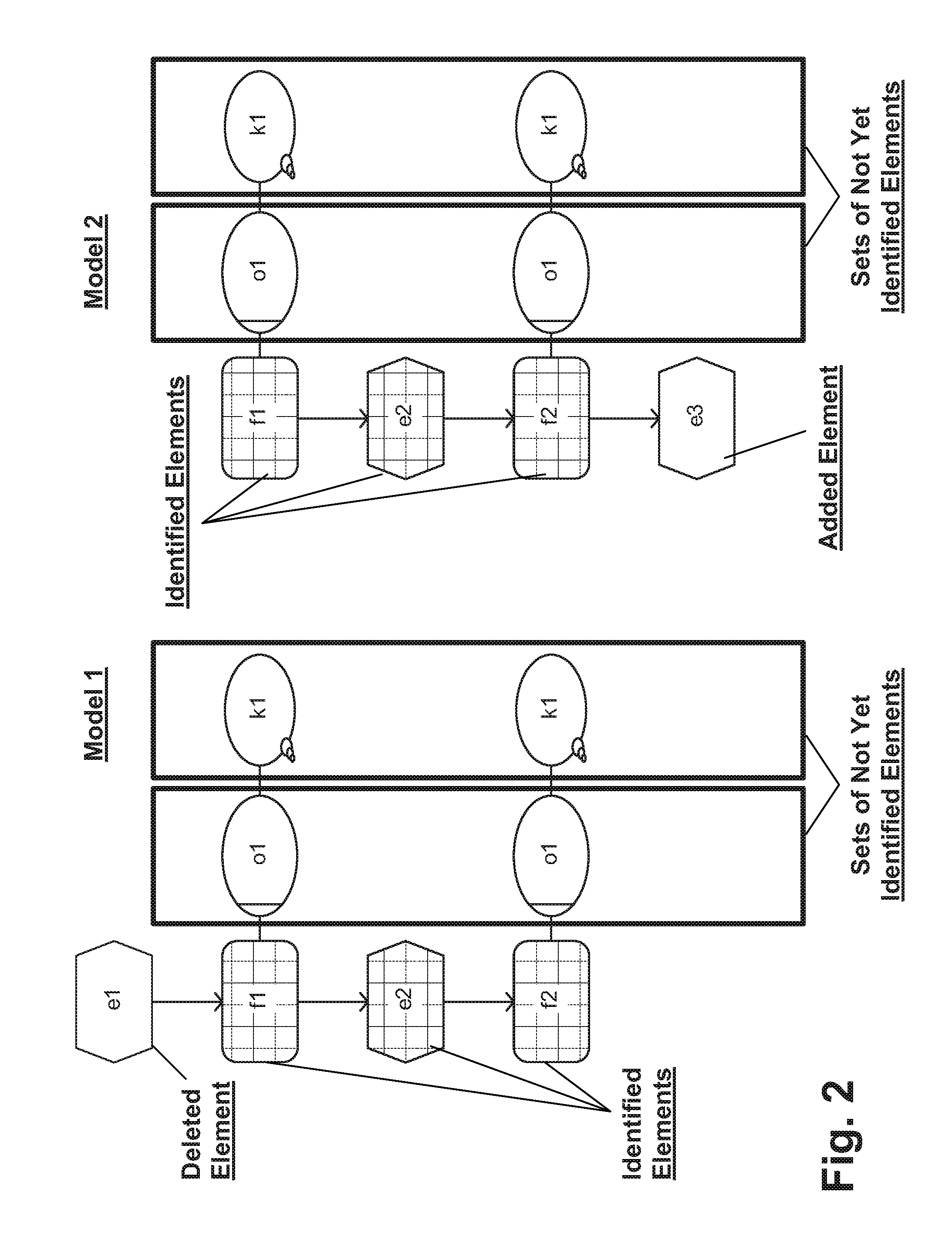Systems and/or methods for identifying corresponding elements in different models
a technology of corresponding elements and models, applied in the field of systems and/or methods for identifying corresponding elements in different models, can solve the problems of not being able to completely solve the problem of comparing arbitrary models, affecting the accuracy of arbitrary models, and often being difficult to compare multiple different arbitrary models
- Summary
- Abstract
- Description
- Claims
- Application Information
AI Technical Summary
Benefits of technology
Problems solved by technology
Method used
Image
Examples
Embodiment Construction
[0031]Certain example embodiments relate to systems and / or methods for identifying corresponding elements in different models (e.g., two different models), e.g., where multiple non-unique elements are connected with one another.
[0032]FIG. 1 shows two example models that will be compared with one another using techniques according to certain example embodiments, and FIGS. 2-4 help illustrate how certain example embodiments may operate. FIGS. 5a-5e show a flowchart that shows an algorithm of certain example embodiments and generalizes the discussion provided in connection with FIGS. 1-4 and below.
[0033]In order to compare the two different models in the FIG. 1 example, it is determined which element of the left model corresponds to which element of the right model. To facilitate identifying such left-right element pairs, an identifier may be consulted. In ARIS models, for example, the GUID of the object definition may be used as a suitable identifier. In other examples, an arbitrary t...
PUM
 Login to View More
Login to View More Abstract
Description
Claims
Application Information
 Login to View More
Login to View More - R&D
- Intellectual Property
- Life Sciences
- Materials
- Tech Scout
- Unparalleled Data Quality
- Higher Quality Content
- 60% Fewer Hallucinations
Browse by: Latest US Patents, China's latest patents, Technical Efficacy Thesaurus, Application Domain, Technology Topic, Popular Technical Reports.
© 2025 PatSnap. All rights reserved.Legal|Privacy policy|Modern Slavery Act Transparency Statement|Sitemap|About US| Contact US: help@patsnap.com



